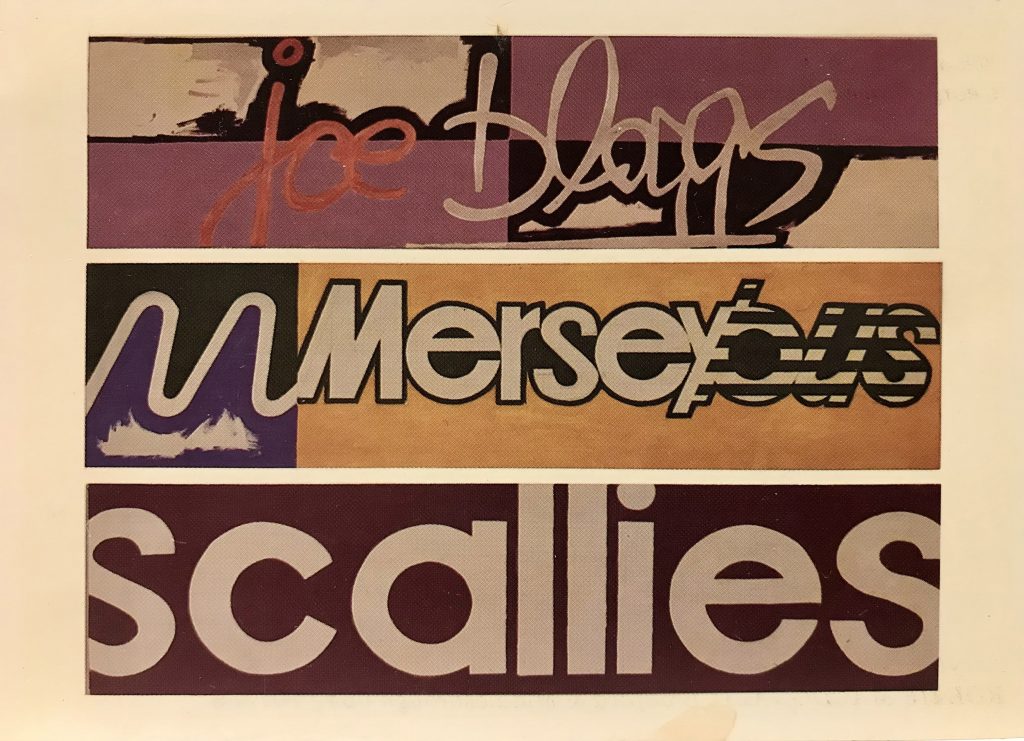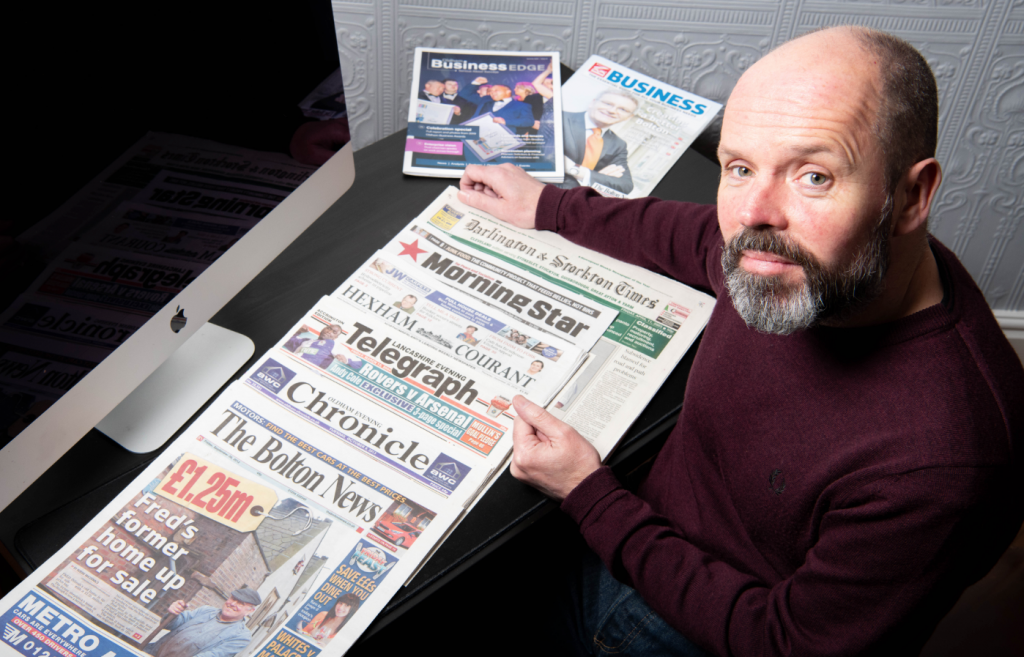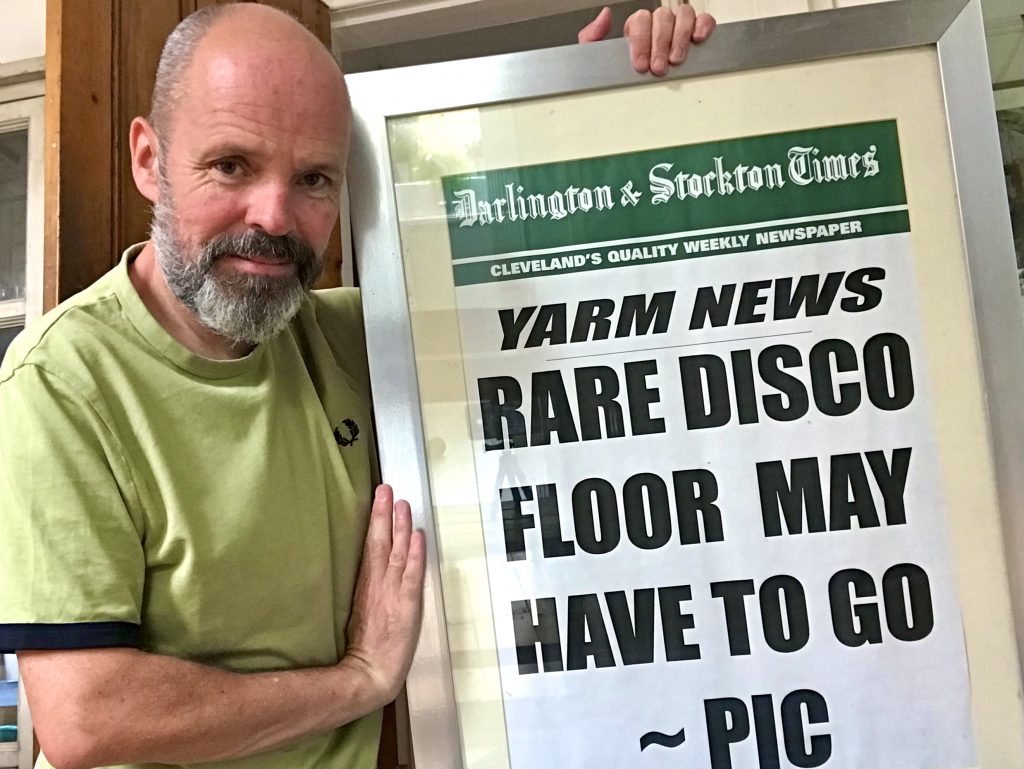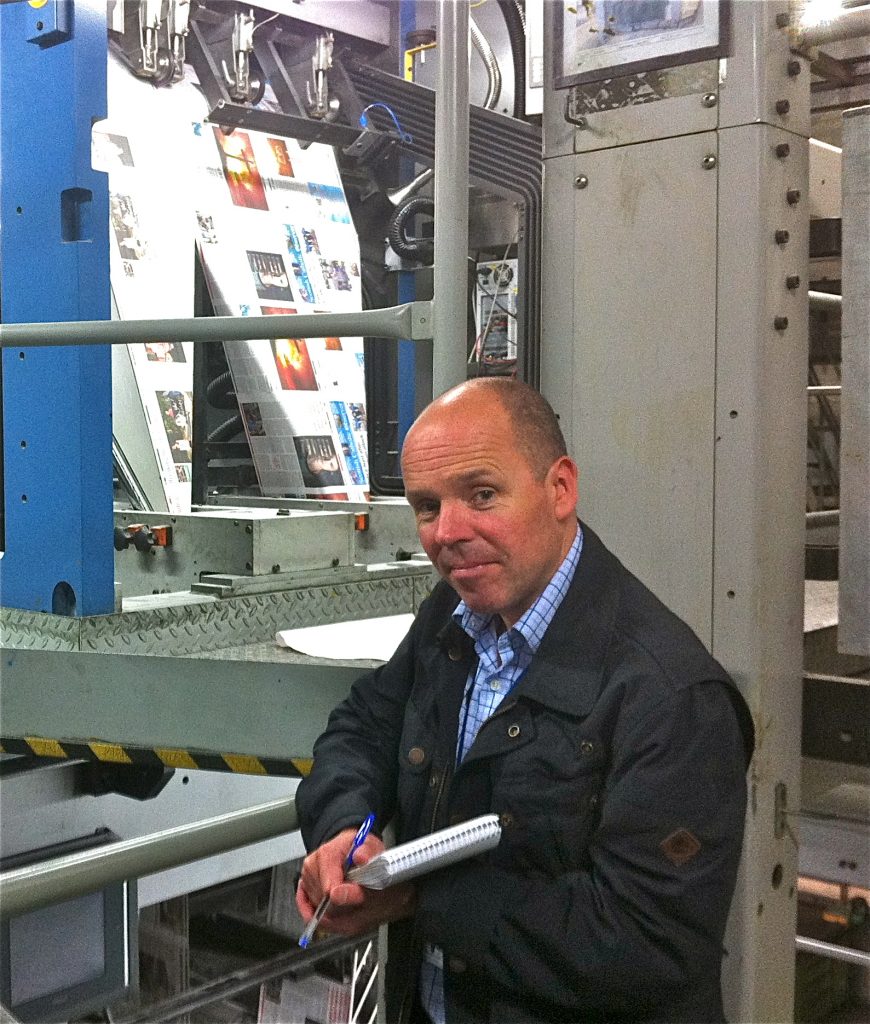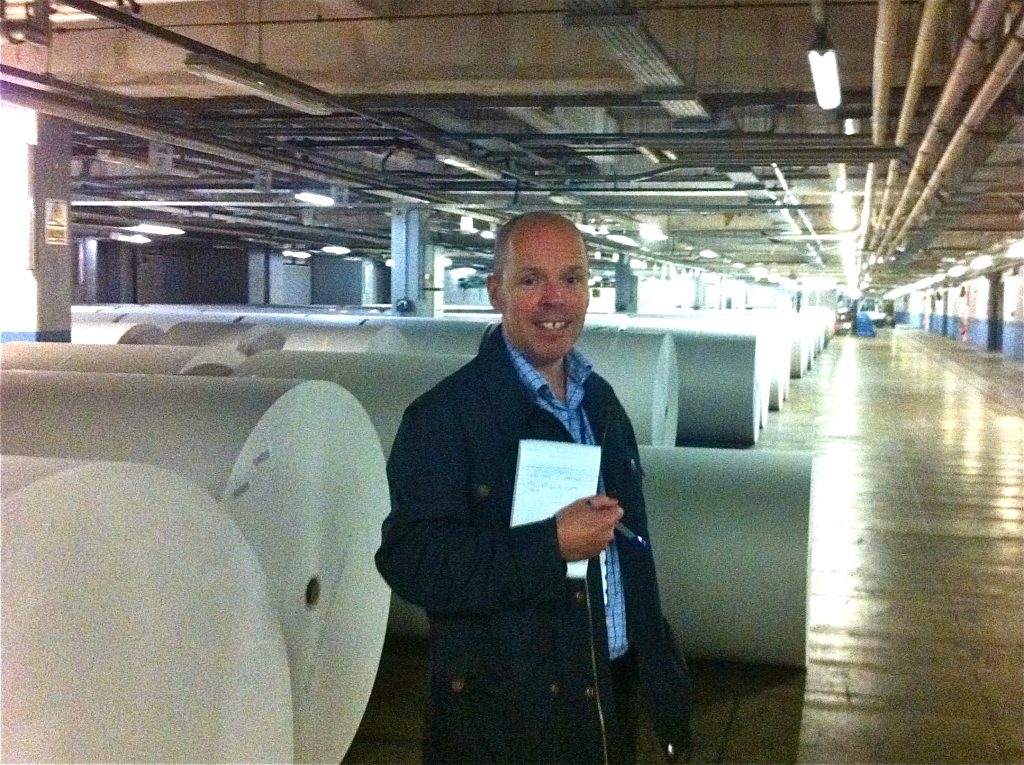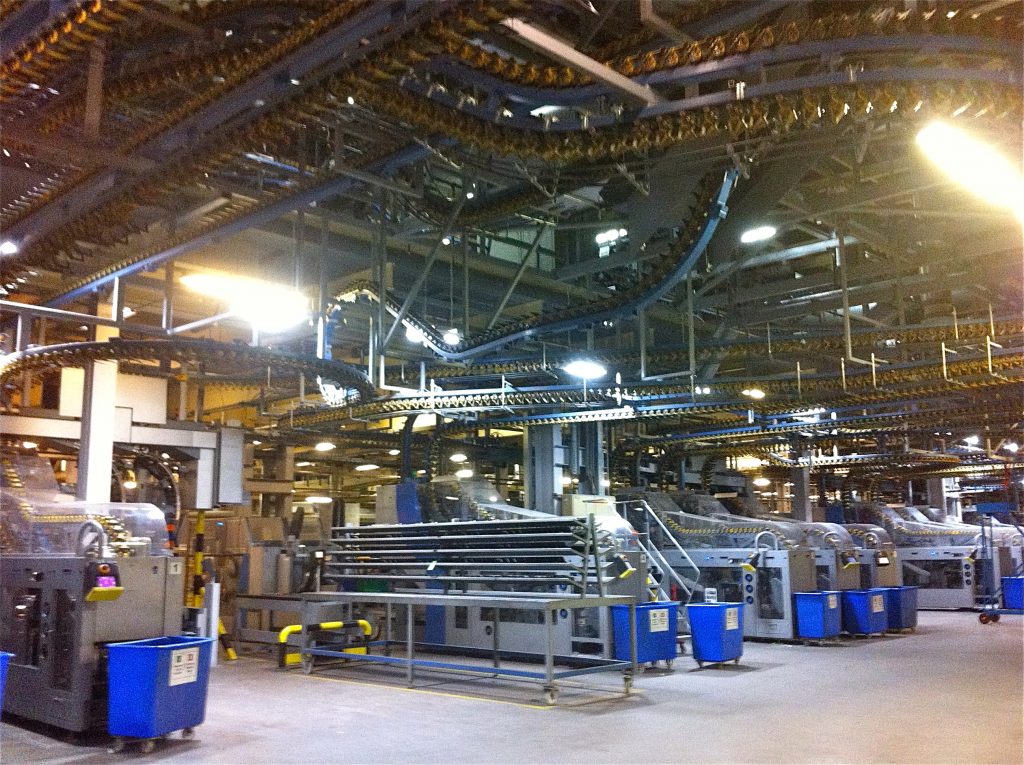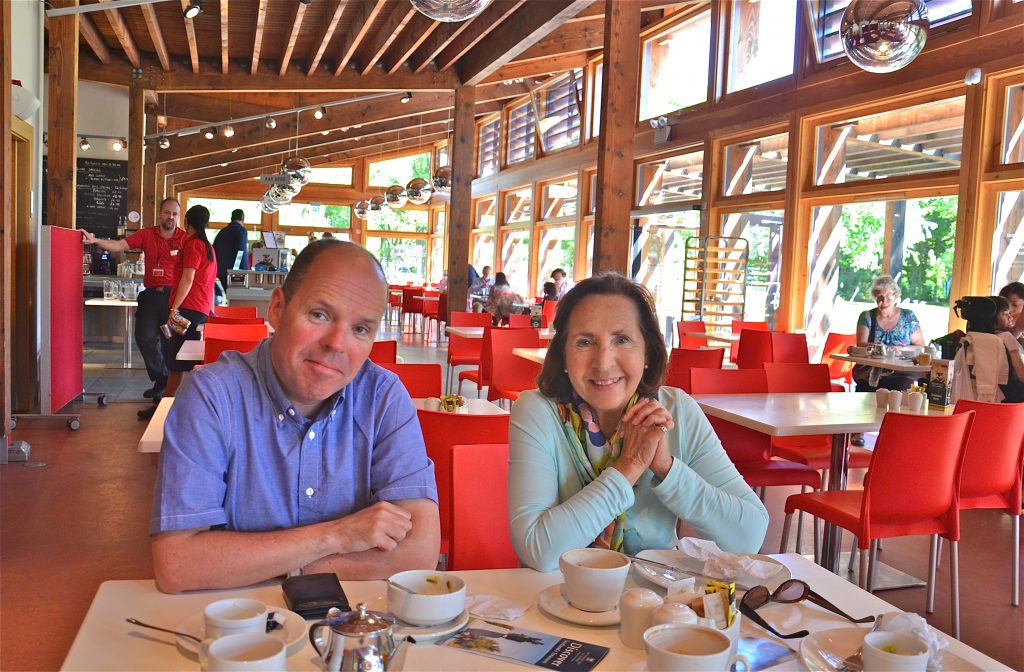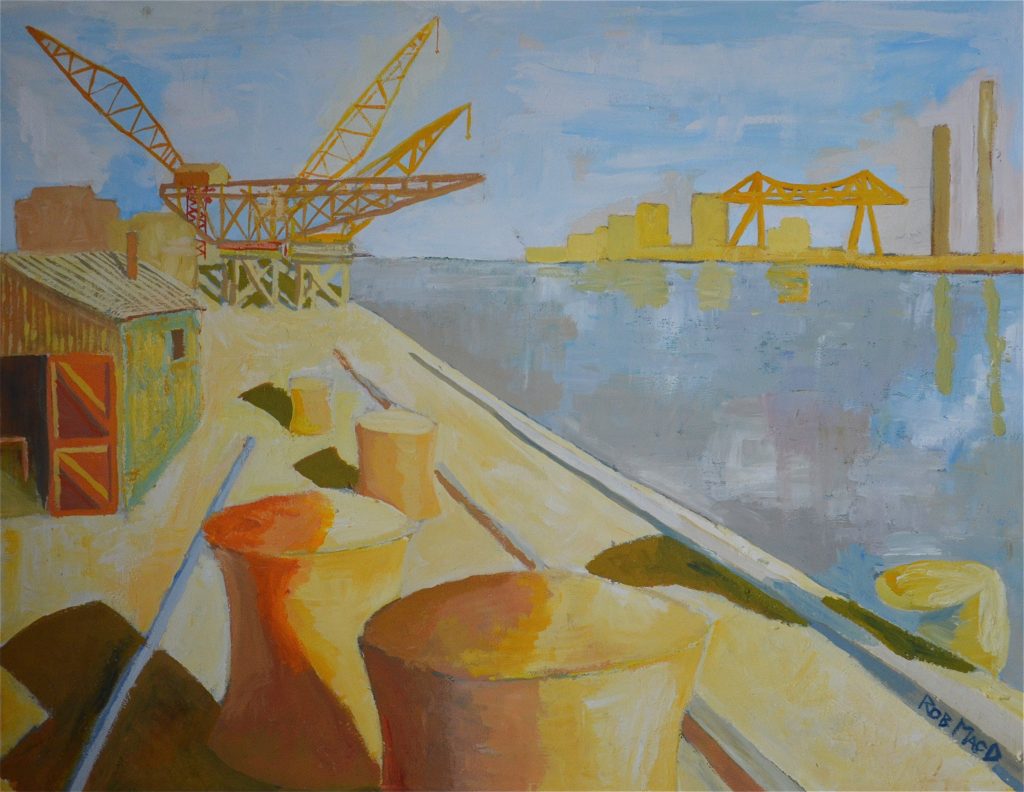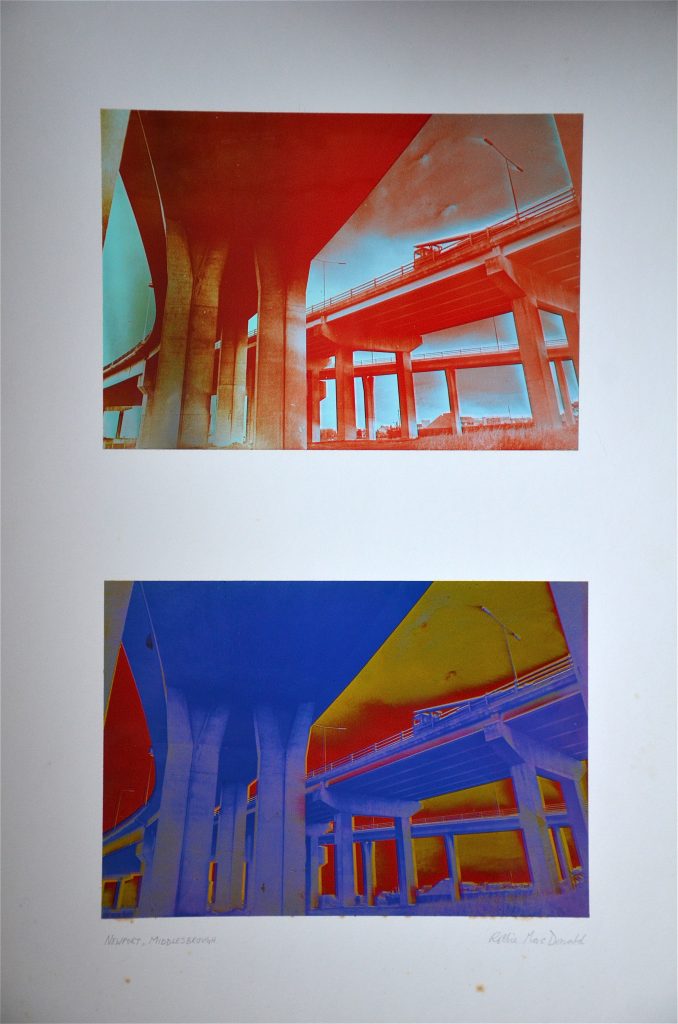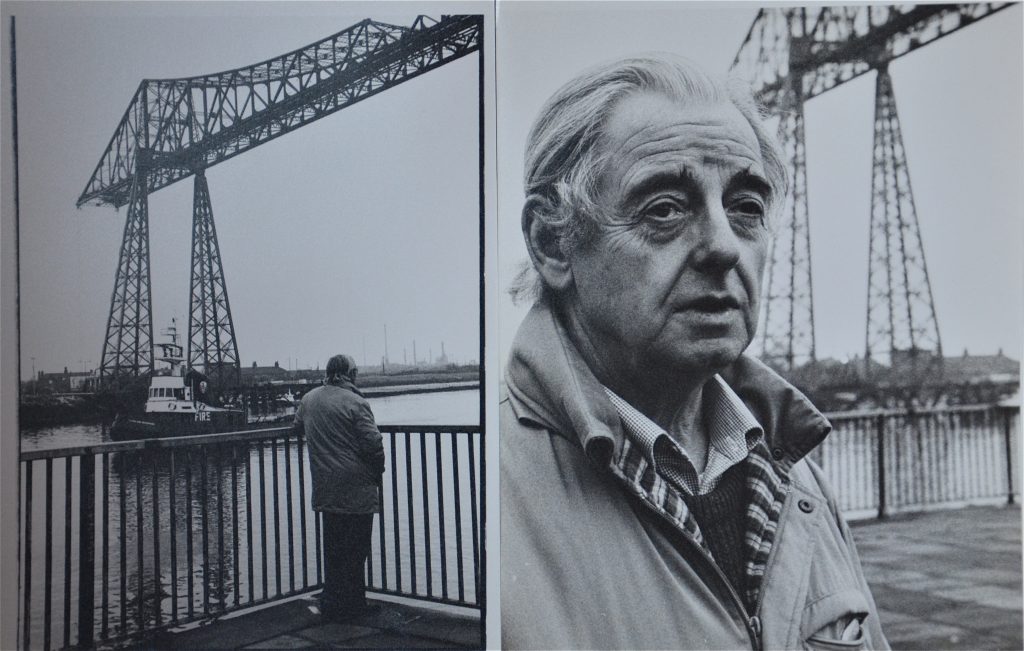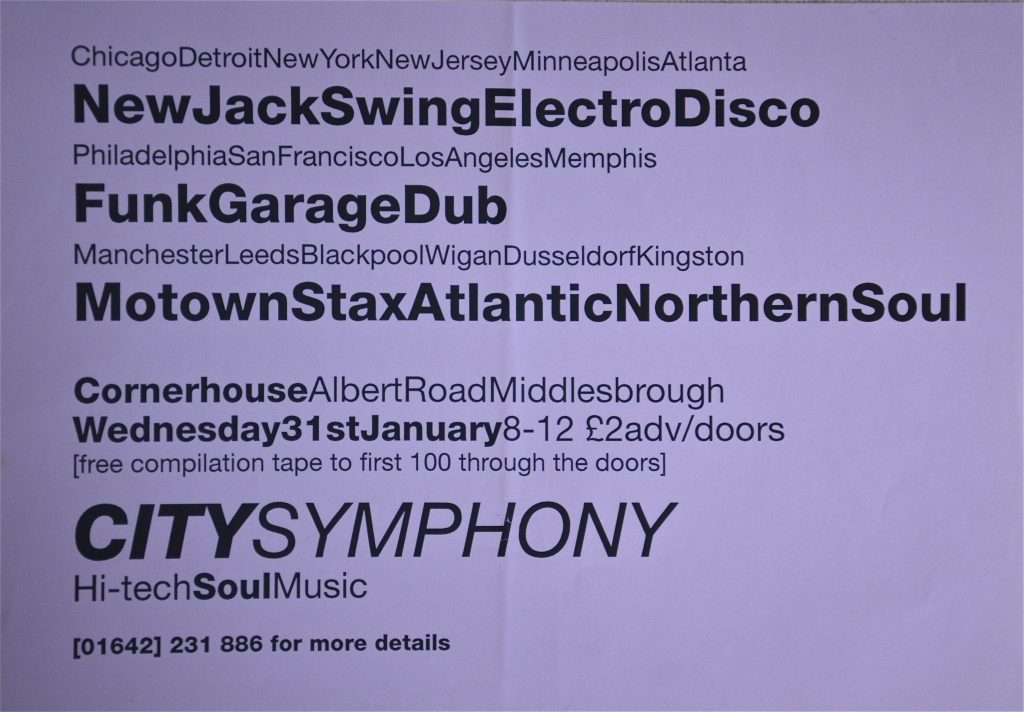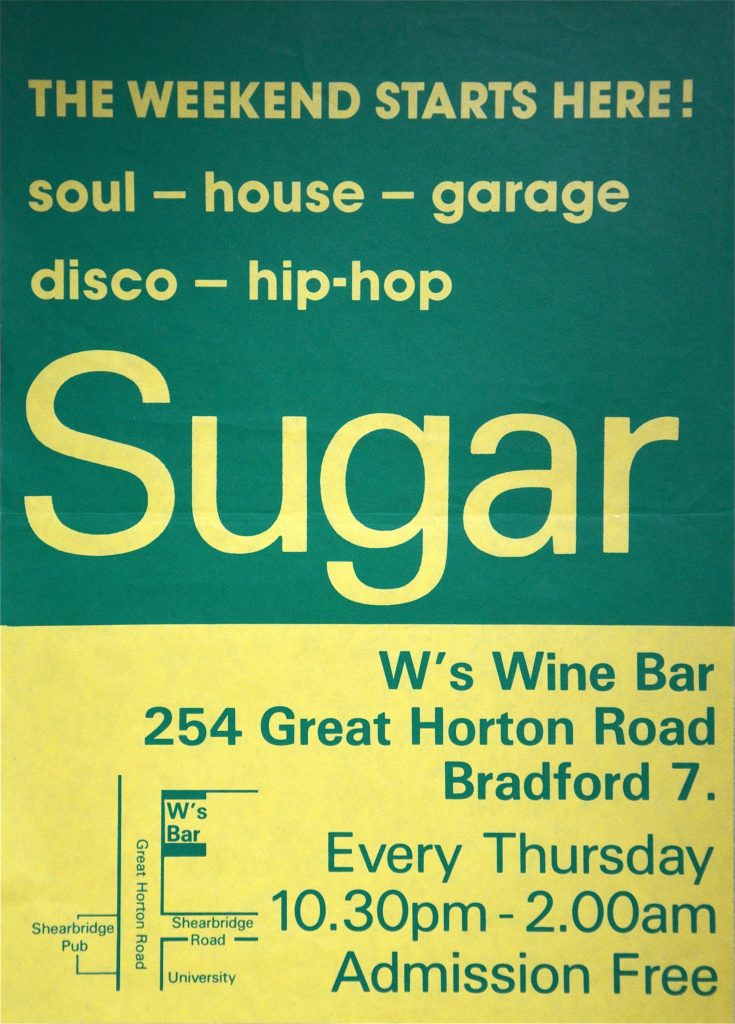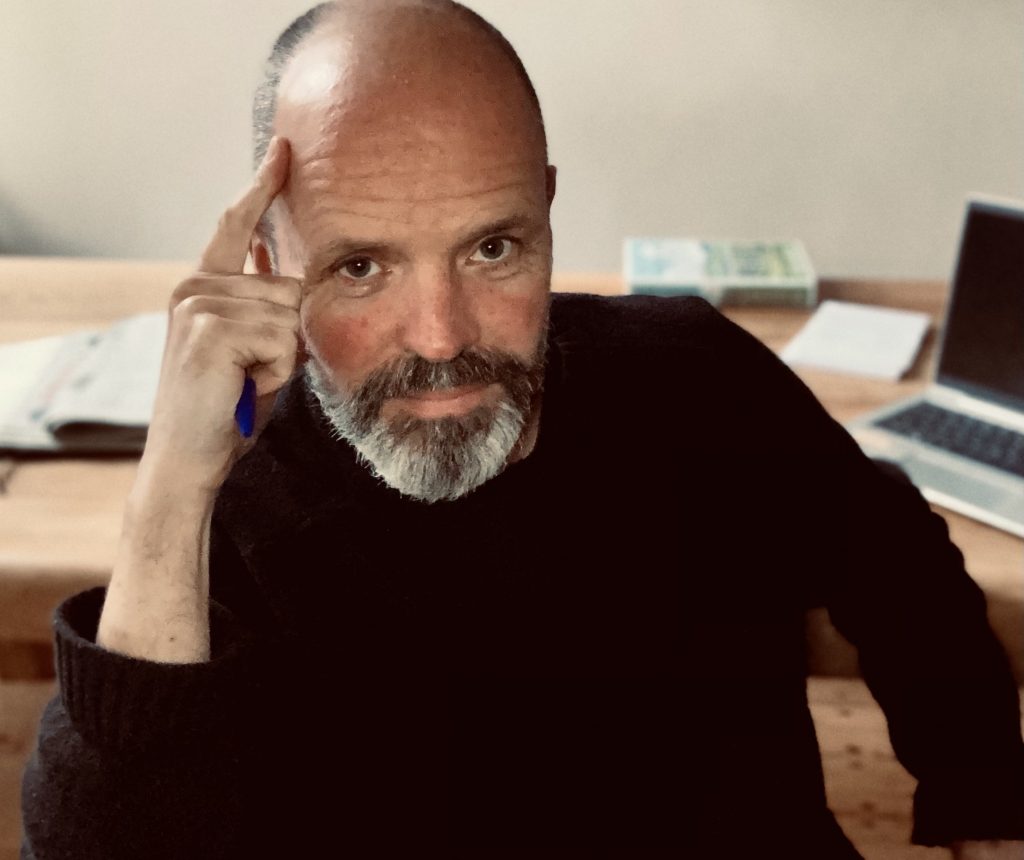
Robbie MacDonald is a journalist and photographer who has lived and worked across northern England, from the Tyne and Tees to the Mersey.
He was born near Glasgow, Scotland, where he spent his early childhood. He later grew up in the north-east of England, near Middlesbrough. He now lives in Manchester.
This blog highlights topics of special interest to him, such as regional life, grassroots political scenes and relationships between regions and nations. The north of England, Scotland and Ireland feature heavily in his photography. But there are other photographs of other nations too, for example Spain and Italy, which explore similar themes such as politics, current affairs, and regional and national matters.
As a journalist since 2000, most of Robbie MacDonald’s employment has been with local newspapers, magazines and online news media across northern England. But his work has also appeared in national UK and Scottish media.
Before becoming a journalist, Robbie’s early years of work were in the print industry, including graphic design, typography and darkroom roles. Other activity has included working in record shops, regional listings magazines, radio broadcasting, clubs and live music venues. Music and the record industry are among his key interests along with journalism, photography, news and current affairs.
SCOTLAND & ENGLAND
Robbie spent his early childhood in Wishaw, near Glasgow. He then moved with his family to the north-east of England in the 1970s. He grew up with a mix of English and Scottish influences. His mother is from Glasgow and his father was from the Highlands.
His family moved to the Middlesbrough area, as did many other Scottish families with links to the steel industry, which was restructured across the UK during the 1960s and 1970s. Others went to areas such as Sheffield.
Redcar and Middlesbrough saw major investment in steel plants and offices during that era. Teesside was a key centre of steel-making which included the huge new Redcar blast furnace development near the estuary of the River Tees and finally opened in 1979.
The Teesside region spans formerly districts of Durham and North Yorkshire. It includes the historic Cleveland district of Yorkshire and has a wide variety of industrial, rural, moorland and coastal areas.
As a teenager in the 1980s, Robbie began supporting both Middlesbrough FC and Glasgow’s Celtic. It felt like a good combination to reflect his Teesside and Scottish identity. A Tees-Clyder perhaps? He watched The Boro regularly but also joined Redcar Celtic Supporters Club. It organised coach trips to Celtic matches in Glasgow and gatherings in Redcar pubs, where videos of Celtic matches were screened. (This was the era before endless football was shown on satellite TV.)
EARLY PHOTOGRAPHY & ART
At school, Robbie studied art and photography. He started exploring locations around Middlesbrough, Stockton and the River Tees through drawings, paintings and photographs. These ranged from Middlesbrough town centre and its riverside district of St Hilda’s to the industry, steel mills, blast furnaces and shipyards downstream at South Bank, Cargo Fleet, Grangetown and Redcar.
An example of a painting from school, below, shows the landscape around Smith’s Dock shipyard looking upstream to Middlesbrough in the distance. It is included here not as a piece of brilliant painting but simply to illustrate the type of industrial and riverside landscapes which inspired him at the time.
Robbie bought his first camera at school in the 1980s and was strongly influenced by north-east English documentary photographers during that era.
They included Middlesbrough’s Ian MacDonald (no relation), Chris Killip and the veteran Tyneside photographer Jimmy Forsyth, an amateur photographer who documented life in Newcastle for decades. Forsyth was featured on a Tyne Tees TV documentary and Robbie also saw him give a talk on Teesside, linked to an exhibition and book about Forsyth’s work.
Other important influences in that era were The Side Gallery in Newcastle and Impressions Gallery in York. They promoted socially-engaged documentary photography and photo-journalism. The Side Gallery also had a strong commitment to recording life in the north-east.
Robbie was also interested in other aspects of art and design, especially printing, pop art, photo-silkscreen printing and colour separation processes. The photographs below, printed in his school darkroom, show Middlesbrough road viaducts and illustrate those visual interests.
Newspaper photo-journalism from the 1980s also had a big impact on Robbie. These included photographs dealing with the de-industrialisation of the north and other UK regions during the 1980s, the 1984-85 miners’ strike and the political problems of Northern Ireland.
ART COLLEGE
After his A-levels, Robbie went to Cleveland College of Art & Design in Middlesbrough (now the Northern School of Art) for a one-year foundation course. He loved the art college environment and its modernist building in the suburb of Linthorpe. (Robbie later worked as a media studies tutor at Cleveland College of Art in the mid-1990s.)
Photos from his foundation course year included shots of Bert Ward, below, who was a political activist from Middlesbrough. Through his life, Bert Ward had worked in different sectors including the railway industry, nursing and, latterly, as an economics lecturer in London.
Bert Ward’s many political activities included cross-party work to end violence in Northern Ireland and bring different sides together for talks. He built links between trade unions, community groups, grassroots activists and mainstream politicians in the UK and Ireland. He also worked with MPs including Mo Mowlam, the former Redcar MP who was Labour Secretary of State for Northern Ireland in the Tony Blair government, and Ulster Unionist leader David Trimble.
Later in life, Bert Ward gave Ray Mallon, the former Cleveland Police chief nick-named Robocop, a crash-course in politics during his successful campaign to become Middlesbrough’s first directly-elected Mayor. Bert Ward is pictured at Middlesbrough’s Tees Transport Bridge in the 1980s. Today, Middlesbrough FC’s Riverside Stadium stands nearby.
After the foundation course in Middlesbrough, Robbie studied an art and design degree at Bradford & Ilkley College.
There, he had the chance to explore West Yorkshire’s cities of Bradford and Leeds, towns such as Halifax, and the region’s distinctive Pennine landscapes. His interest in northern topics and photography developed further. Football fan culture, the late 1980s house music and rave scene and northern youth culture were among the topics he explored. He also became interested in typography and learned typesetting.
After graduating from Bradford in 1990, Robbie worked in graphic design and commercial printing in Bradford. The city had a significant printing industry serving a broad range of sectors.
Graphic design, print and type techniques at the time straddled manual, photographic and early digital processes. Physical cut-and-paste artwork and typography was done across drawing offices and darkrooms, with paper and card, large photographic film and paper, scalpels, light blue pens, metal rulers and spray-mount glue. Estimated measurements of type was done using pica scale rulers. Type was set manually or photographically then, later, digitally. Leading, kerning, points, ems and ens was all part of the terminology. Ink was mixed by hand or machine and matched by human eye to Pantone colour system cards.
In 1992, Robbie returned to the north-east. He taught media studies at Cleveland College of Art & Design in Middlesbrough and also Cleveland Technical College in Redcar.
During the late 1990s, Robbie worked for HMV in Middlesbrough and Leeds. In other activity, he wrote for the north-east listings magazine The Crack and wrote publicity material for The Arena club and music venue in Middlesbrough.
MUSIC
Music, especially dance, soul and electronica, DJ culture, the record industry and radio are other big interests of Robbie’s.
In the 1990s, he visited American recording studios, dance record shops and music venues in New York and Philadelphia that were closely linked to soul and dance music of the 1970s, ’80s and ’90s. These included Dance Tracks in New York and Sigma Sound Studios in Philadelphia.
Sigma was the key recording studio for the legendary Philadelphia International Records label in the 1970s, led by pioneering producers Gamble & Huff. Their work included classic albums by performers such as The O’Jays, Harold Melvin & The Blue Notes, the Three Degrees and Teddy Pendergrass. Sigma Sound Studios was later used by the iconic New York disco label Salsoul Records into the late ’70s and early ’80s.
The legacy of Philadelphia lnternational Records goes on. Throughout 2021 and 2022 a series of special box sets, vinyl LPs, CDs and digital streams have been released by Sony. Philadelphia International’s influence on soul and dance music is immense and ongoing.
Robbie’s interest in music included running small club nights in Bradford and Middlesbrough in the 1990s (see posters below) and broadcasting on community radio and pirate radio stations. He also presented some speech-based arts and entertainment reviews on BBC Radio Cleveland during the 1990s (now renamed BBC Tees).
JOURNALISM
In 1999, Robbie left HMV and retrained as a newspaper reporter in Darlington, influenced by friends working for newspapers including the Evening Gazette in Middlesbrough, The Northern Echo, The Journal in Newcastle and papers in the Bradford district.
His first job as a trainee news reporter was at the weekly Hexham Courant in Northumberland. Later he joined the Darlington & Stockton Times, where he became Cleveland reporter covering his home district including Stockton-on-Tees, Middlesbrough, Darlington and smaller towns and villages across Cleveland, North Yorkshire and south Durham.
He later moved to the north-west of England and worked on daily titles including The Bolton News, Lancashire Telegraph and Oldham Evening Chronicle. Over the years, he has written for local news media covering Harrogate, northern Leeds, Bradford, Accrington, Blackburn, Burnley, Stockport, Manchester, Warrington, Runcorn and Merseyside
In more recent years, Robbie has supplied news and photographs to print and online titles including the Manchester Evening News and Liverpool Echo, plus regional and national news, business and trade media. He also worked for some time in the Liverpool and Merseyside area in journalism and photography.
Along with photography from the north-east and Yorkshire, photography from the Liverpool and Greater Manchester regions has also influenced him. Liverpool in particular has a strong photography culture including E Chambre Hardman, Frank Lenhan, Bernard Fallon and Tom Woods. This blog includes some of Robbie’s images taken on Merseyside.
Scottish and Irish photography, journalism and culture has also provided great inspiration. This includes the rich body of photo-journalism covering gaelic games and Ireland’s county-based amateur Gaelic Athletic Association (GAA). The GAA’s influence on Irish life is vast. There is not a parish in Ireland without a GAA club or presence. In addition to sport, it promotes Irish music and language. The Corrs are an example of musicians nurtured by the GAA.
More recent activity for Robbie has included developing an event called Tees Politics, History & Ideas. This was held at the MIMA gallery and museum in Middlesbrough with a range of speakers including Teesside University lecturers and research students, political activist and former councillor Stuart Hill, Councillor Sue Jeffrey of Redcar & Cleveland Borough Council who was also the Labour candidate for the Tees Valley Mayor; former Northern Echo editor Peter Barron, writer and publisher Andy Croft of Smokestack Books; the Tees Women Poets and historian and author Tony Fox.
Robbie has given talks about his photography, journalism and interests. For further details, call 07748 168916
